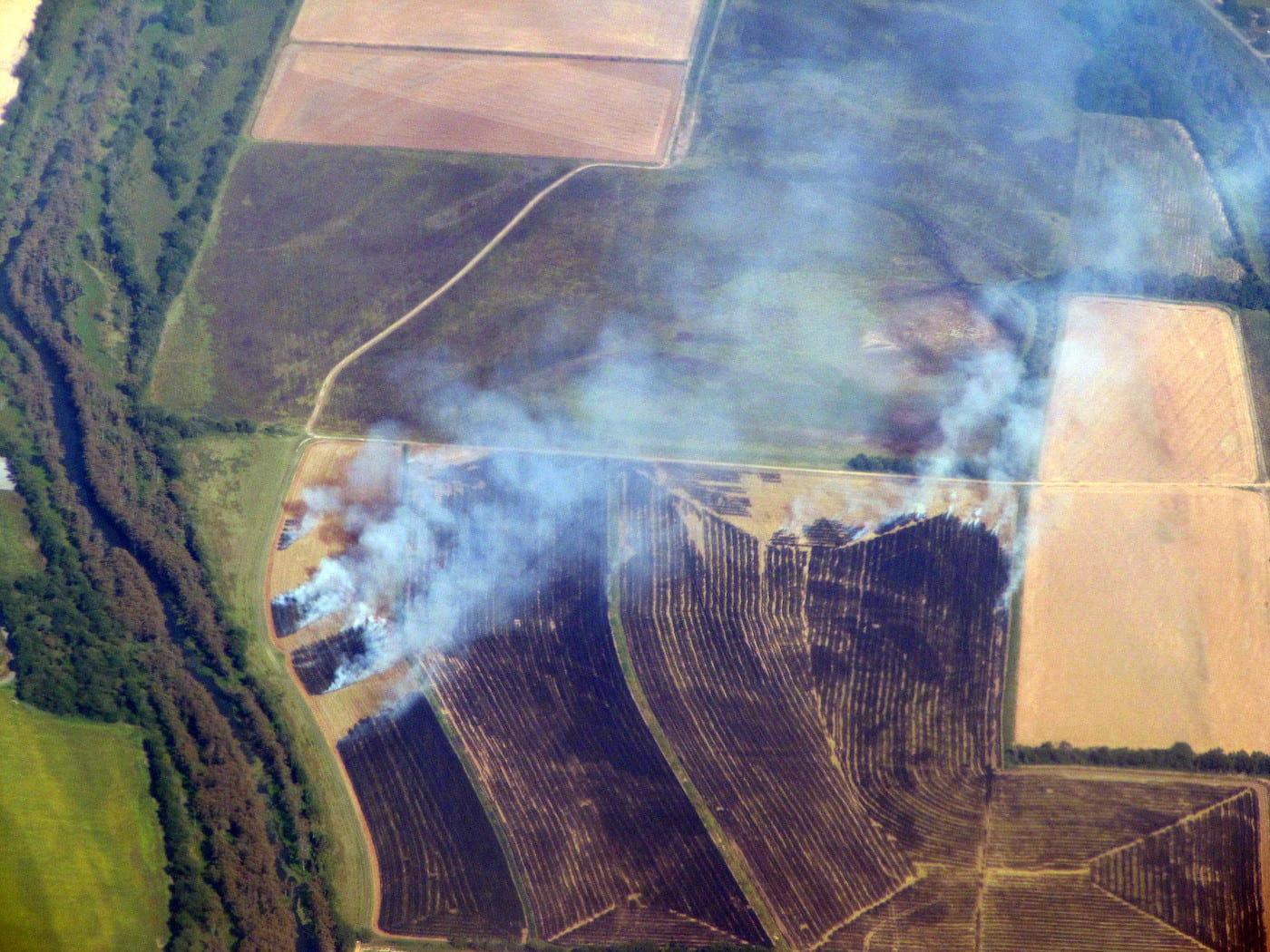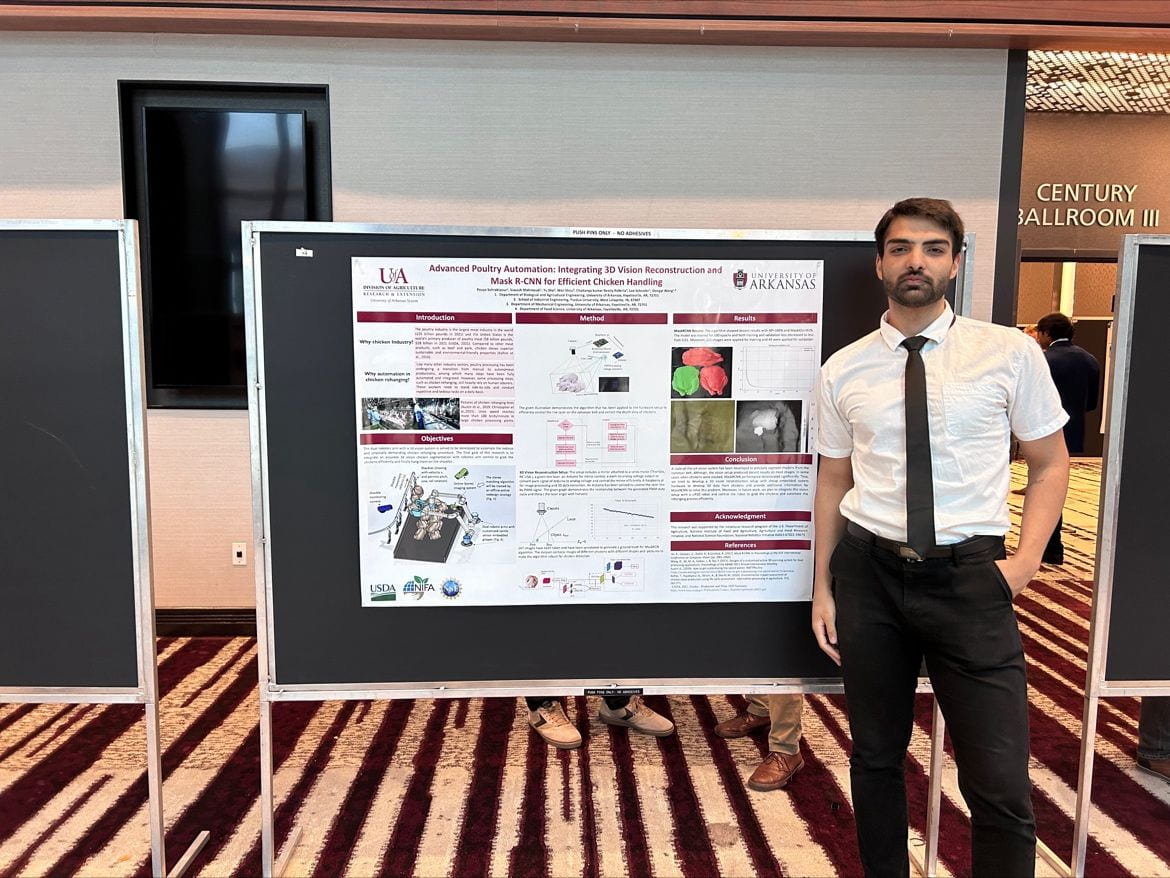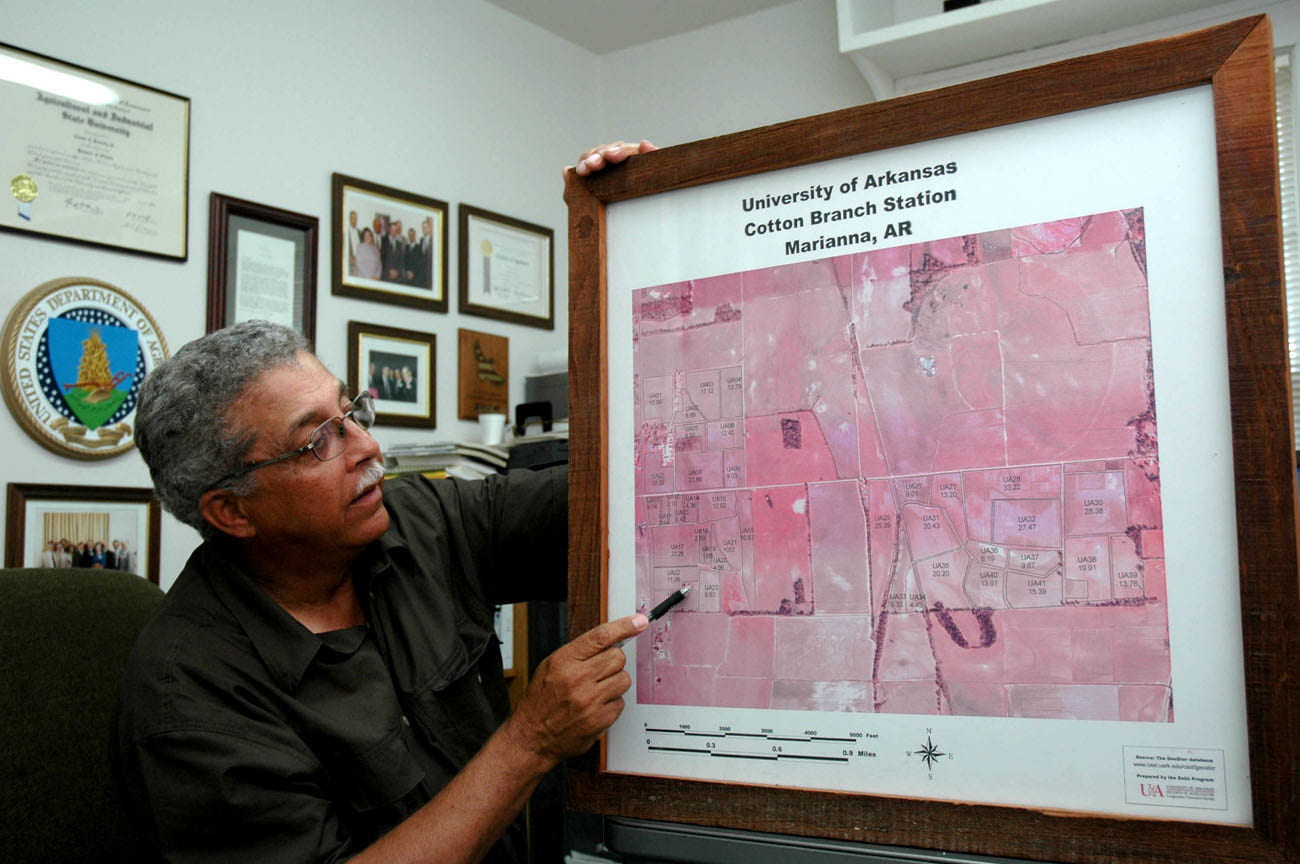The Cost of Burning Crop Residue is not just Lost Nitrogen
Crop residue can build soil carbon over time
By John Lovett – Sept. 9, 2022

MEDIA CONTACT
John Lovett
U of A System Division of Agriculture
Arkansas Agricultural Experiment Station
(479) 763-5929 | jlovett@uada.edu
FAYETTEVILLE, Ark. — The common practice in Arkansas of burning crop residue comes at the cost of soil nutrient levels and lost potential to build soil health with carbon.
Trent Roberts, professor of soil fertility and testing for the Arkansas Agricultural Experiment Station and a soil specialist for the Cooperative Extension Service, recently ran the numbers on lost nutrients when burning crop residue. The value has increased exponentially over the past 18 months with the spike in fertilizer prices that began in 2021.
The experiment station and extension service are the research and outreach arms of the University of Arkansas System Division of Agriculture.
According to Roberts’ calculations at current fertilizers prices, a high-yielding rice or corn crop that produces about 5 tons of residue contains nutrients that are worth about $275 per acre: $85 per acre in nitrogen; $30 per acre in phosphorus; $150 per acre in potassium; and $10 per acre in sulfur.
With an estimated 1.15 million acres of rice planted in 2022, burning the crop residue would mean a loss of about $316 million in nutrients, Roberts said. Carbon locked in crop residue is also released back into the atmosphere as carbon dioxide when burned.
Roberts, who also holds the Endowed Chair in Soil Fertility Research for the Division of Agriculture, said crop residue management practices vary yearly, but most farmers will typically burn their crop residue after harvest during a dry fall, and fewer will burn during a wet fall.
“When you burn residue or bale it and haul it off, you’re taking all the carbon off with it, too,” Roberts said. “There is a place where burning residue makes sense and is needed, but those situations should be taken on a case-by-case basis and not burning residue purely out of convenience.”
Kris Brye, University Professor of applied soil physics and pedology with the experiment station, says carbon and organic matter are critical to soil aggregation, the positive condition of soil particles clumping together. Soils that have stable aggregates are less prone to erosion and can therefore maintain greater levels of soil organic matter and total carbon, Brye explained.
“If you’re going to start managing for improving soil carbon, it’s going to take a semi-drastic change in philosophy and management practices,” Brye said. “You have to give it a little bit of time to equilibrate. Microorganisms have to adjust to new circumstances, and sometimes that’s hard to afford the necessary time to equilibrate. But those that do, I think, will swear by the benefits because there is a cascade of positive effects.”
Those benefits, Brye said, include better nutrient cycling because more carbon is in the soil, a bigger microorganism population that can reduce the amount of fertilizer, and improved water infiltration.
Building soil health through carbon is more difficult in the South, where microbes work overtime in the warmer winters, Roberts said.
Arkansas farmers will need almost quadruple the amount of organic matter on their fields to manage for improving soil carbon, Roberts said. Microbes that eat the crop residue are more active in the South than in the North over winter. Roberts said southern farmers “have to really pile that residue on there.” He said that crop residue plus chicken litter applications or cover crops are a start.
“You have to be patient,” Roberts said. “Even if we don’t see big increases in soil carbon, we see benefits. So don’t get discouraged by the fact that maybe your soil health score or your soil organic matter is not increasing. If you’re implementing those soil health practices like keeping the residue and reducing tillage, even though you may not be moving the dial, it is having a positive effect.”
Roberts prompted producers to check out the Division of Agriculture’s Decision Support Software, including the Potash Rate Calculator, as tools to maximize yield and profitability. The software takes soil test results, yield potential, and the price of fertilizer into consideration to provide recommended amounts of fertilizers.
For more information on values of common Arkansas crops please visit the Arkansas Row Crops Blog and search for “Residue Burning in Field Crops.” The article provides estimated values of crop residue prior to the increase in fertilizer prices in 2021.
To learn more about the Division of Agriculture research, visit the Arkansas Agricultural Experiment Station website: https://aaes.uada.edu. Follow us on Twitter at @ArkAgResearch and Instagram at @ArkAgResearch.
To learn about Extension Programs in Arkansas, contact your local Cooperative Extension Service agent or visit https://uaex.uada.edu/. Follow us on Twitter at @AR_Extension.
To learn more about the Division of Agriculture, visit https://uada.edu/. Follow us on Twitter at @AgInArk.
About the Division of Agriculture
The University of Arkansas System Division of Agriculture’s mission is to strengthen agriculture, communities, and families by connecting trusted research to the adoption of best practices. Through the Agricultural Experiment Station and the Cooperative Extension Service, the Division of Agriculture conducts research and extension work within the nation’s historic land grant education system.
The Division of Agriculture is one of 20 entities within the University of Arkansas System. It has offices in all 75 counties in Arkansas and faculty on five system campuses.
The University of Arkansas System Division of Agriculture offers all its Extension and Research programs and services without regard to race, color, sex, gender identity, sexual orientation, national origin, religion, age, disability, marital or veteran status, genetic information, or any other legally protected status, and is an Affirmative Action/Equal Opportunity Employer.
MEDIA CONTACT
John Lovett
U of A System Division of Agriculture
Arkansas Agricultural Experiment Station
(479) 763-5929 | jlovett@uada.edu




